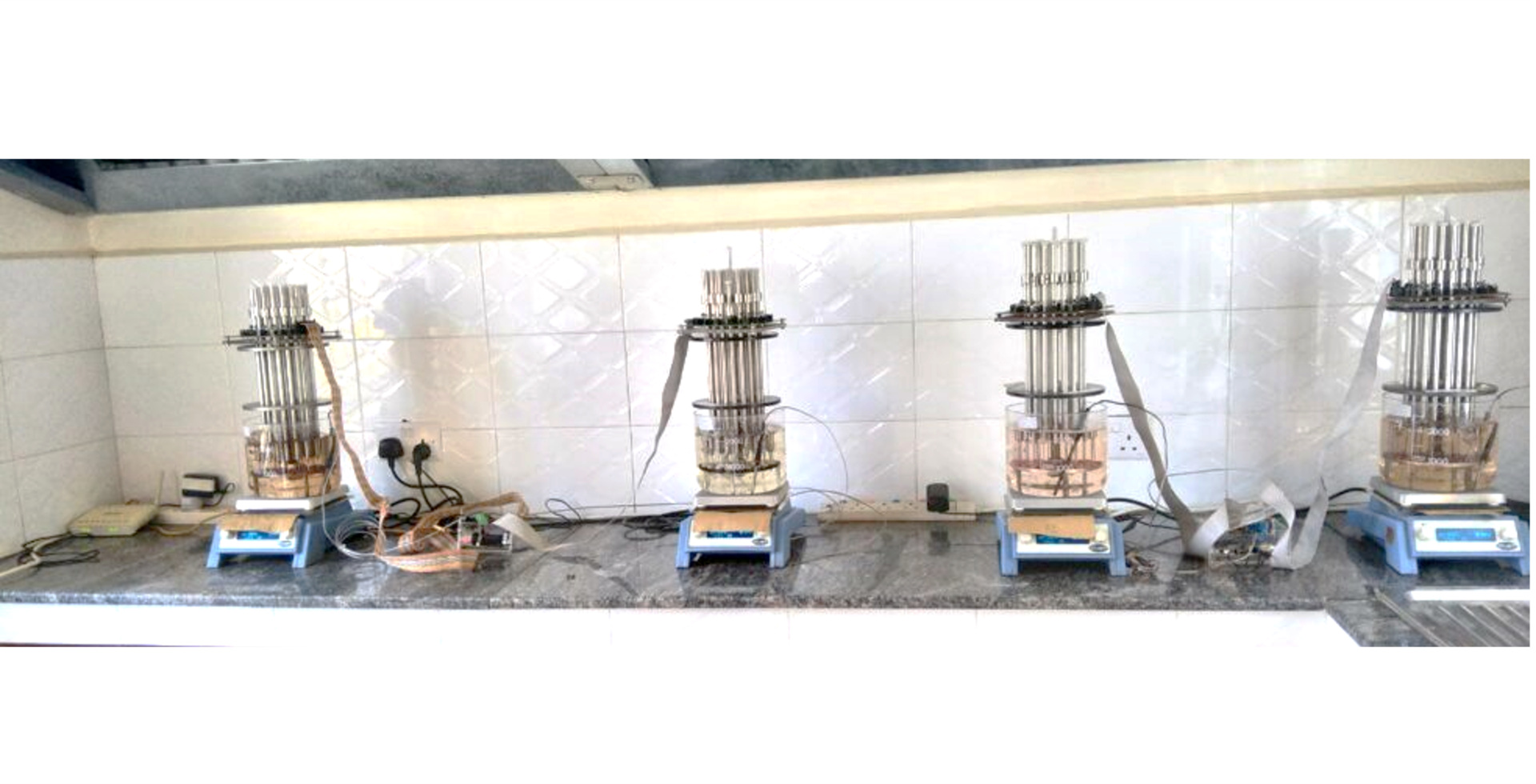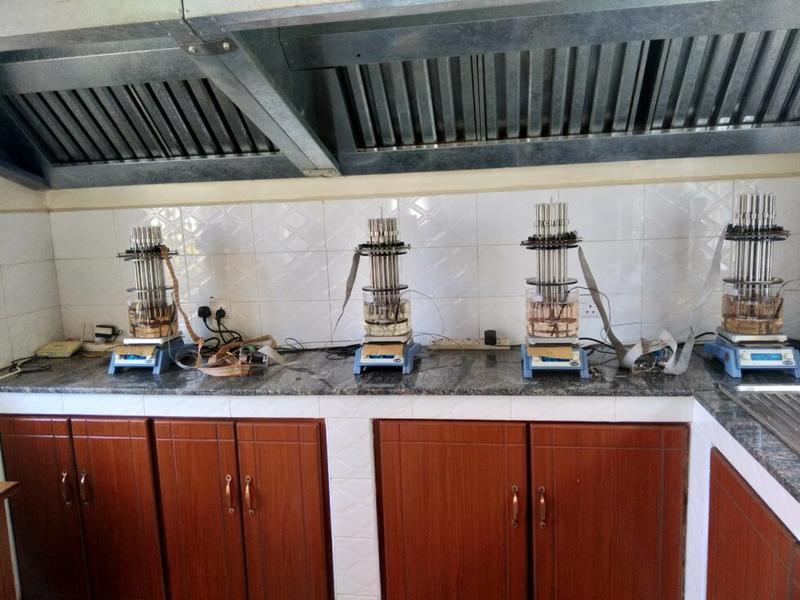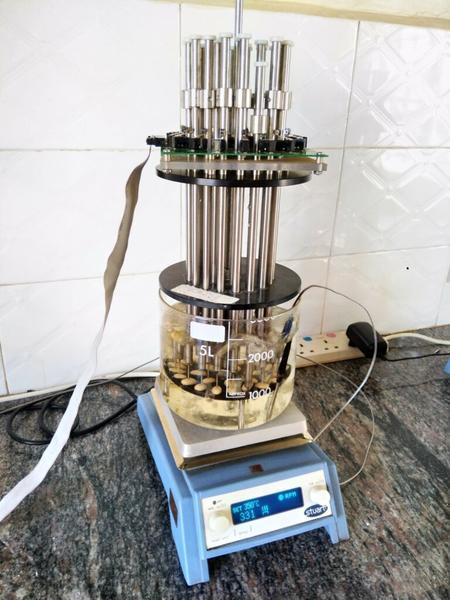Bean Cooking Machine

Cooking time of the common bean is an important trait for consumer preference, with implications for nutrition, health, and environment.
To reduce on social-economic and environmental degradation, the Alliance of Bioversity International and CIAT (Alliance) is working to see that the breed common beans that cook faster and still retain the nutrient quality.
That's why Alliance researchers Harold Diaz and Henry Ruiz modified Mattson-based cooker to become partially automated using an embedded system for taking data from each seed individually.
The Matson cooker is fitted with an automated cooking time data collector that consists of wire ribbon, temperature sensors, contact sensitive terminals and the UDOO single board computer. The software developed for this system is connected to a computer or smartphone that monitors the cooking time process.
The process is simple, beans that have reached harvest maturity are picked from the field and dried under controlled temperatures to attain a moisture content of 13%. The samples to be cooked are soaked in distilled water for 18 hours prior to mounting onto the machine by lifting the pins and putting them in the engraved wells on the Matson until all the 25 pins are set for cooking.
The system uses a custom-made printed circuit board assembly with 24 installed micro-switches that detect if any of the 90-g stainless steel piercing pins pierce the bean. A ribbon cable connects the plate to a Udoo micro computer system harboring a router for Wi-Fi communication. Furthermore, a PT100 sensor was added to allow monitoring of the temperature throughout the experiment.
Finally, a web application was developed to monitor and control wirelessly the process on any computer or mobile device.
Advantages:
- 2 independent processes running at the same time.
- All data is automatically recorded into the database.
- It does not require permanent attention.
- Events saved every time plunger drops, even if happens simultaneously.
- Friendly user interface.
- Small and compact size.
- Wireless communication.
- Allows mobile devices to control the process.
- Open-source and low-cost efficient resources.
In what context is this tool useful?
The Bean Cooking Machine is useful in a context of research institutes and breeding programs intended to find grains that cook faster due to the lower time taken for meal preparation usually carried out by women, which would allow them to pursue other tasks. Another important issue is the economy of energy use. The energy for cooking represents about 90% of all household energy consumption in developing countries using wood as a major fuel source. When this wood is burned, it contributes to high levels of local air pollution.
From a nutritional perspective, cooking time is important because it affects the content of phytochemicals with antinutritional effects. Prolonged cooking times were reported to reduce and degrade nutrients important for the human diet. Research also revealed that fast cooking beans retain more minerals and proteins after being fully cooked compared to other slow cooking beans, showing the higher nutritional value of fast cooking beans. Therefore, a shorter cooking time can have a positive impact on consumers, freeing up time, as well as improving nutrition, health, and economy, especially in areas where beans are consumed as a primary source of protein. Several methods have been used to evaluate cooking time for beans.




Results
This machine has been adapted and implemented in the Alliance Americas Campus in Palmira Colombia, and in Africa with partners across the continent (Uganda, Tanzania, Malawi) and Michigan State University.
Researchers found in a recent study some bean varieties with the lowest average values for cooking time such as the VEF (37.4 min), MAGIC (38.1 min), and MIP (51.6 min). In the MAGIC population, the founder with the lowest cooking time was MIB778 (30.2 min).
Through research efforts in the bean community, some varieties that cook quickly have been identified, released, and promoted to the end users. The shorter cooking time (less than 60 minutes) varieties include NABE 6, ROBA1, RWR 1873, NABE 4, NABE 12C, KK20, AWASH MELKA, AMAHUNJA, BIHOGO, CAB2, CNF5520 & G858
Through this process, of identifying lines that have traits for faster cooking, the selected beans will improve the livelihood of end users and preserve the environment.
Contact people
Clare Mukankusi - [email protected] (Principal Scientist)
Harold Diaz - [email protected] (Main Developer)
Fabricio Soto – [email protected] (Technical Support).
